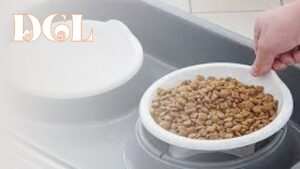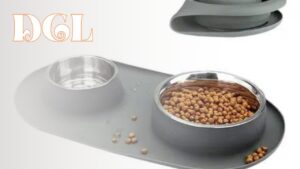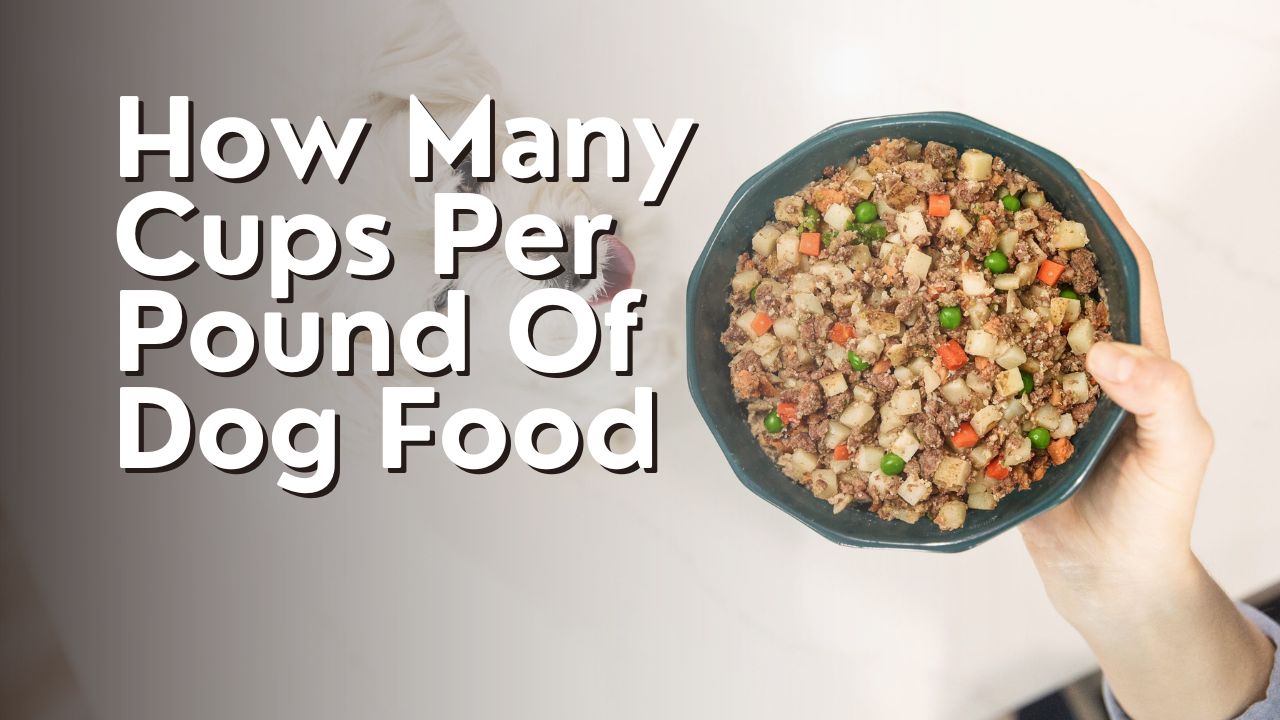Hey there! Have you ever wondered how many cups of dog food are in a pound? Well, you’re in luck because I’m here to break it down for you.
Understanding your furry friend’s nutritional needs is crucial for their overall health and well-being. And when it comes to feeding them, it’s important to know how much food they actually need.
In this article, we’ll explore how to determine the caloric needs of your dog and convert those measurements from cups to pounds.
We’ll also discuss the importance of monitoring your dog’s weight and health, as well as provide some helpful tips for feeding your four-legged companion.
So, if you’re ready to learn more about how to properly feed your dog, let’s dive right in!
Understanding Your Dog’s Nutritional Needs
To ensure that you are meeting your dog’s nutritional needs, it’s important to understand how many cups per pound of dog food you should be feeding them. Feeding your dog the right amount of food is crucial for their overall health and well-being.
The recommended amount of dog food can vary depending on factors such as age, breed, size, and activity level. On average, a healthy adult dog needs about 1 cup of food per 20 pounds of body weight. This means that if your dog weighs 40 pounds, it would require approximately 2 cups of dog food per day. However, it’s important to note that this is just a general guideline and individual dogs may have different dietary needs.
It’s always a good idea to consult with your veterinarian to determine the specific nutritional requirements for your dog. They can take into account any underlying health conditions or special dietary needs that your dog may have. Additionally, puppies, pregnant or lactating dogs, and senior dogs may require different amounts of food to meet their unique needs.
Remember, proper nutrition is essential for your dog’s overall health and lifespan. By understanding how many cups per pound of dog food to feed your furry friend, you can help ensure they receive the right amount of nutrients to thrive.

Determining the Caloric Needs of Your Dog
When determining the caloric needs of my dog, I start by calculating their daily caloric intake. This involves considering their age, size, and activity level.
By adjusting their diet based on these factors, I can ensure they are receiving the right amount of calories to maintain a healthy weight and energy level.
Calculating Daily Caloric Intake
To calculate your dog’s daily caloric intake, follow these steps:
- Determine your dog’s ideal weight.
- Use a recommended feeding guide or consult with your veterinarian to find the appropriate amount of calories your dog needs per day.
- Calculate how many cups of food your dog should eat per pound.
- Remember that this is a starting point and adjustments may be necessary based on your dog’s individual needs and activity level.
- Monitor your dog’s weight and body condition regularly to ensure they maintain a healthy weight.
Adjusting for Age, Size, and Activity Level
Finding the right amount of food for your furry friend can be a bit of a puzzle, but don’t worry, I’ve got you covered!
When adjusting your dog’s food intake based on its age, size, and activity level, it’s important to remember that these factors can vary greatly from one dog to another.
Puppies and younger dogs tend to have higher energy needs, so they may require more food than older dogs. Similarly, larger dogs generally need more food than smaller dogs due to their higher metabolic rates.
Lastly, if your dog is very active, such as participating in agility or working as a service dog, it may require additional calories to support its active lifestyle.
By taking these factors into consideration, you can ensure that your furry friend is getting the right amount of food to keep them healthy and happy.
Converting Cups to Pounds
To figure out how many pounds of dog food you need, just remember that there are about 4 cups in a pound. Converting cups to pounds is a simple process that can help you determine the right amount of food to feed your furry friend. Here are three reasons why this conversion is important:
- Accurate Feeding: By knowing the conversion rate, you can ensure that your dog is getting the right amount of food based on their specific needs. This is especially crucial for maintaining a healthy weight and avoiding overfeeding or underfeeding.
- Cost Savings: Understanding the cups-to-pounds conversion can also help you save money. By knowing the exact amount of food your dog requires, you can avoid wasting excess food and prevent unnecessary expenses.
- Portion Control: Converting cups to pounds allows you to easily measure out the appropriate portion size for your dog’s meals. This helps in maintaining portion control and preventing overeating, which can lead to obesity and other health issues.
By keeping these three reasons in mind, you can ensure that you are providing your dog with the right amount of food, saving money, and promoting their overall health and well-being.
Monitoring Your Dog’s Weight and Health
When it comes to monitoring my dog’s weight and health, I focus on two key points: regular weigh-ins and body condition scoring.
By consistently checking my dog’s weight, I can track any changes and make adjustments to their diet if necessary. This helps me ensure that they are maintaining a healthy weight and avoiding any potential health issues associated with being overweight or underweight.
In addition to regular weigh-ins, body condition scoring is another important tool for assessing my dog’s weight and overall health. This involves visually and physically evaluating their body to determine if they are at a healthy weight or if they need to gain or lose a few pounds.
As a responsible pet owner, I understand the importance of adjusting my dog’s food portions as needed to ensure they maintain a healthy weight and overall well-being. This includes monitoring their weight and body condition regularly, and making any necessary changes to their diet or exercise routine to keep them in optimal health.
Regular Weigh-ins and Body Condition Scoring
Regular weigh-ins and body condition scoring are important for determining the appropriate amount of dog food for your furry friend. Here are three reasons why these practices are important:
- Accurate Measurement: Regular weigh-ins allow you to track your dog’s weight changes over time. This helps you determine if they are gaining or losing weight, which can affect the amount of food they need.
- Health Assessment: Body condition scoring involves evaluating your dog’s overall body shape and condition. This helps you assess if they are underweight, overweight, or at an ideal weight. Adjusting their food intake accordingly can prevent health issues.
- Tailored Nutrition: By monitoring weight and body condition, you can work with your veterinarian to determine the appropriate amount of food for your dog. This ensures they receive the right balance of nutrients to maintain a healthy weight and overall well-being.
Adjusting Food Portions as Needed
Adjust your dog’s food portions as necessary to ensure they maintain a healthy weight and overall well-being. Just like humans, dogs have different metabolisms and activity levels, so it’s important to adjust their food intake accordingly. To help you visualize how much food your dog needs, here’s a handy table:
| Weight Range (lbs) | Cups of Food per Day |
|---|---|
| 10-20 | 1-2 |
| 20-30 | 2-3 |
| 30-40 | 3-4 |
| 40-50 | 4-5 |
| 50-60 | 5-6 |
Remember, these are just general guidelines. Factors like age, breed, and health conditions should also be taken into consideration. It’s always a good idea to consult with your veterinarian to determine the appropriate food portions for your specific dog. By adjusting their food portions accordingly, you’ll help keep your furry friend healthy and happy.

Tips for Feeding Your Dog
To make mealtime enjoyable for your furry friend, it’s important to know how many cups of dog food to serve per pound. Feeding your dog the right amount of food is crucial for their overall health and well-being. Here are some tips to help you with feeding your dog.
Firstly, it’s important to consult with your veterinarian to determine the appropriate amount of food for your dog based on their age, weight, and activity level. Each dog is unique and may have different dietary requirements.
When measuring the dog food, use a standard measuring cup to ensure accuracy. It’s recommended to divide the daily food portion into two or three meals to prevent overeating and to maintain a healthy weight.
Observe your dog’s body condition regularly. If they start to gain weight, it may be necessary to adjust the portion size accordingly. On the other hand, if they lose weight or appear hungry, you may need to increase their food intake.
Remember to provide fresh water at all times. Hydration is key for your dog’s overall health and digestion.
Feeding your dog is an important responsibility as a pet owner. By following these tips and adjusting the food portions as needed, you can ensure that your furry friend is getting the right amount of nutrition for a happy and healthy life.
Frequently Asked Questions
Can I feed my dog the same amount of food every day, or should I adjust it based on their activity level?
It’s important to adjust your dog’s food based on their activity level. If they are more active, they may need more food to fuel their energy. Consult with your vet for specific recommendations.
How do I know if my dog is overweight or underweight, and what should I do about it?
To determine if my dog is overweight or underweight, I can assess their body condition by feeling their ribs and observing their waistline. If necessary, I’ll consult a vet for guidance on adjusting their diet and exercise routine.
Are there any specific dog breeds that require a different amount of food per pound than others?
Yes, there are specific dog breeds that may require different amounts of food per pound than others. Factors such as size, metabolism, and activity level can influence their dietary needs. Consulting with a veterinarian is recommended for specific breed guidelines.
Can I use a measuring cup for dry dog food, or should I use a kitchen scale for more accuracy?
I recommend using a kitchen scale for more accuracy when measuring dry dog food. It ensures you’re providing the correct portion size based on weight, which is important for your dog’s nutrition and overall health.
Is it necessary to consult with a veterinarian before making any changes to my dog’s diet?
Consulting with a veterinarian before making any changes to my dog’s diet is necessary. They have the expertise to provide guidance and ensure that any changes are safe and appropriate for my dog’s specific needs.
Conclusion
In conclusion, understanding your dog’s nutritional needs is vital to their overall health and well-being. By determining the caloric needs of your dog and converting cups to pounds, you can ensure they are receiving the right amount of food.
Monitoring their weight and health is also important to make any necessary adjustments. Remember to follow these tips for feeding your dog to keep them happy and healthy.
With proper nutrition, your furry friend will thrive and enjoy a long, happy life.


